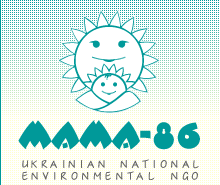Opening of Eco-toilet in Gozhuly
On 30th of October the official opening ceremony of eco-toilet in Gozhuly school was held. The representatives of WECF project team joined by Annemarie Mohr — coordinator of WECF projects in Russia and Ukraine, MAMA-86 network and project partners, local authorities, school staff, builders, children and other visitors took part in this small but very important for local people event.
In Ukraine 5.7 millions pupils in 21,000 schools, including 2 millions — in 14,000 schools in rural areas.
The lack of adequate water supply and sanitation conditions/facilities are the main problem of rural schools in Ukraine.
In Poltava rayon there are 30 schools: 12 schools are with inside toilets, 5 schools have toilet and pit latrines and 13 schools — only with pit latrines. In cold time of the year from October till April the children use cold pit latrines, that is not healthy and comfortable. Pit latrines are the children problems forgotten by adults.
In October 2004 MAMA-86 and WECF in cooperation with experts of Hamburg Environment University implemented the eco-san toilet pilot in Ukraine: v. Gozhuly, Poltava rayon. This pilot is based on the multiplying the experience of WECF and Media & Sanitas of the building the school eco-toilet in v. Baire Mare, Romania in October 2003.
In Gozhuly village (population is 3000) there is not water supply and canalization at school, where 180 pupils are studding. Till November 2004 children used the pit latrine.
In May 2004 WECF and MAMA-86 organized Workshop on water supply and eco-sanitation.
During July — October the eco-toilet was built.
The main advantages of dry eco-toilet are:
1. Affordability and sustainability of solution:
- simple design;
- construction with local materials;
- easy and cheap maintenance.
2. Environmental-friendly technology based on:
- water saving — water is not needed for flushing,
- protection ground water — no sewerage wastes, small volume of grey wastewater,
- recycling of the nutrients (separation gathering of the wastes: urine — fertilizer ready for using and faeces composting)
- cleaning and disinfection without using chlorine-reagents.
Costs of toilet restoring/building in Ukraine for rural areas are:
- Conventional toilet repairment costs 50,000 UAH;
- pit latrine building 18,000 UAH;
- dry eco-toilet building in v.Gozhuly 55,000 UAH (without VAT).
For maintenance conventional toilet is needed:
1. Water supply+canalization services payment. In case of Gozhuly school it costs 0.63 UAH per month per capita or school has to pay 107.1 UAH per month (1285.2 UAH per year).
2. Hygienic reagents and materials: for disinfection — chlorine-content substances.
Today in the framework of the project MAMA-86 tasks are:
- to teach children and school staff how to use and maintenance eco-toilet,
- to monitor the eco-toilet operation and maintenance (economical, technical, human aspects)
- to analyze and develop the model of eco-toilet adapted for rural areas of Ukraine.










